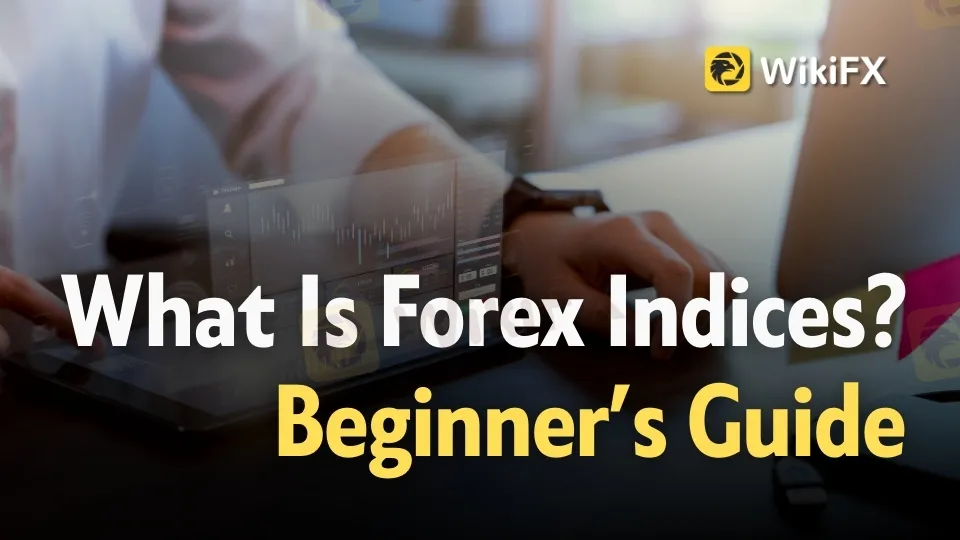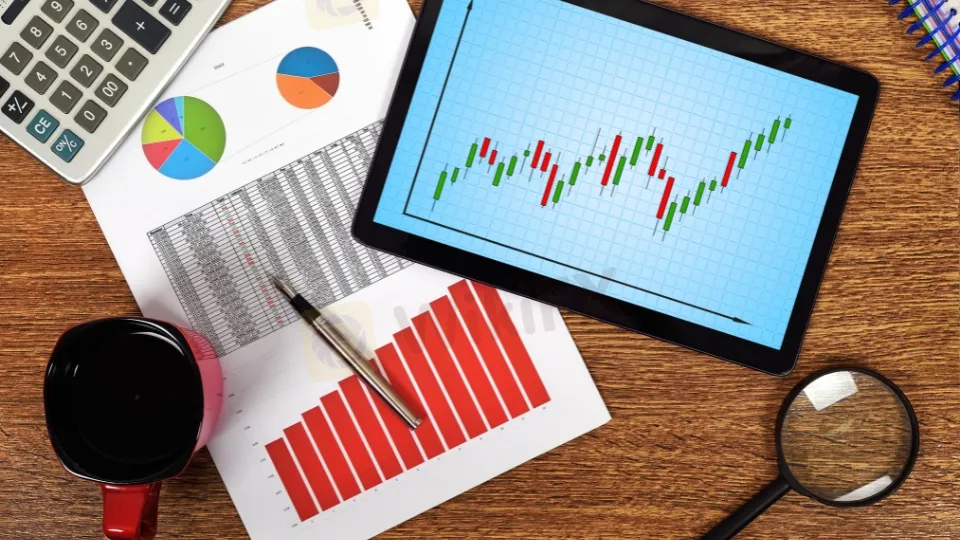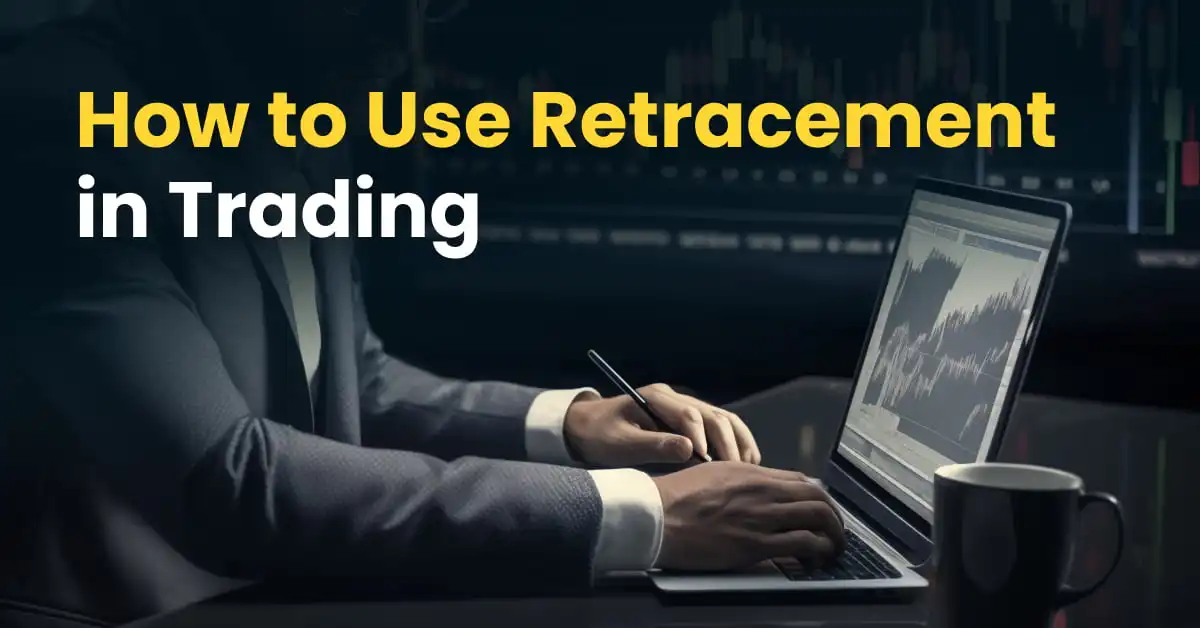What Is Indices in Forex? A Beginner’s Guide to Trading Forex Indices
Abstract:Understand what indices in forex are, how DXY works, key differences vs pairs, pros/cons, and where to trade CFDs—beginner-friendly, expert-backed guide.

Introduction: Why “Forex Indices” Matter for New Traders
If the goal is to gauge a currency‘s overall strength without juggling dozens of pairs, forex indices are a powerful, time‑saving tool—think of them as “currency baskets” that show how a currency performs against a weighted group of counterparts, with the U.S. Dollar Index (DXY) being the most widely watched benchmark worldwide. In this guide, we’ll clarify what is indices in forex, explain how DXY is calculated, compare indices vs forex pair trading, outline pros and cons, and share where traders access these markets as CFDs on regulated platforms.
What Are Indices in Forex? The Big Picture
Forex indices (also called currency indices or forex baskets) combine multiple currency pairs that share the same base currency to represent the “aggregate” strength of that currency across a balanced set of counterparts. In practice, the index level rises when its underlying component pairs collectively move in favor of the base currency and falls when they weaken, similar to how stock indices reflect the combined movement of their constituents.
- A forex index is analogous to a stock market index, but instead of stocks, it tracks currency exchange rates weighted by importance.
- The basket concept improves signal quality by reducing idiosyncratic pair noise and offering a broader read on currency strength.
These concepts mirror stock index logic: an index is a statistical composite that tracks a groups performance (stocks or currencies) using defined rules and weightings.
The U.S. Dollar Index (DXY): The Currency Index Most Traders Start With
The U.S. Dollar Index (often quoted as DXY) tracks USD versus a basket of six major currencies using a weighted geometric mean, making it the de facto global measure of the dollars strength.
DXY Basket Components and Weights
- EUR/USD: 57.6%
- USD/JPY: 13.6%
- GBP/USD: 11.9%
- USD/CAD: 9.1%
- USD/SEK: 4.2%
- USD/CHF: 3.6%
These weights are hard‑coded into the index methodology and give EUR/USD the largest influence on DXY, reflecting the size and integration of the European economy in USD trade relationships.
How DXY Is Calculated (Beginner-Friendly)
DXY uses a geometric formula that multiplies each component pair raised to a fixed exponent corresponding to its weight; pairs where USD is the quote (like EUR/USD, GBP/USD) have negative exponents, and pairs where USD is the base (like USD/JPY, USD/CHF) have positive exponents.
- The canonical formula takes the form: USDX = 50.14348112 × (EUR/USD)^(-0.576) × (USD/JPY)^(0.136) × (GBP/USD)^(-0.119) × (USD/CAD)^(0.091) × (USD/SEK)^(0.042) × (USD/CHF)^(0.036).
This geometric structure ensures proportional influence by weight and stabilizes the indexs long‑term comparability.
Why DXY Isnt the Only Dollar Measure
DXY is widely used, but it‘s concentrated in European exposure due to the heavy EUR weight; for more diversified trade-weighted coverage, economists often analyze the Federal Reserve’s Nominal Broad U.S. Dollar Index, which incorporates a wider set of U.S. trading partners. Traders commonly watch both to cross‑validate USD strength from market and macro perspectives.
Forex Indices vs Forex Pairs: Key Differences
Although both involve currencies, trading an index vs a single pair can feel very different in practice:
- Scope:
- Index: Broad measure of a currencys performance versus a basket (e.g., USD vs 6 majors in DXY).
- Pair: One exchange rate between two currencies (e.g., EUR/USD), more sensitive to bilateral flows and news.
- Volatility and noise:
- Index: Often smoother, since diversification dampens pair-specific shocks.
- Pair: More idiosyncratic; can diverge from the currencys broad trend due to counter‑currency news.
- Strategy utility:
- Index: Better for macro bias, trend confirmation, and correlation overlays with commodities, rates, and equities.
- Pair: Best for precise tactical execution tied to specific catalysts or carry dynamics.
- Education and simplicity:
- Index: Easier for beginners to interpret “currency strength” at a glance.
- Pair: Requires a deeper understanding of two economies and cross‑drivers simultaneously.
In short, indices are macro compasses; pairs are precision instruments for deployment once the macro view is set.

Pros and Cons of Trading Forex Indices (CFDs)
Trading access for most retail traders typically comes through CFDs on regulated brokerage platforms, making it possible to speculate long or short on forex indices like USDX/DXY without directly handling all underlying pairs.
Advantages
- Broader signal: Captures overall currency strength, not just bilateral quirks.
- Cleaner macro read: Aligns well with macro themes such as monetary policy cycles and risk sentiment.
- Efficient exposure: One instrument replaces multiple pair positions needed to create a synthetic basket.
- Risk smoothing: Diversification across components can reduce single‑pair event risk.
Disadvantages
- Basket bias: Fixed weights (like DXYs heavy EUR) can skew the interpretation of “global” strength.
- Less granularity: An index wont capture specific pair opportunities (e.g., idiosyncratic GBP event risk).
- Access and rules: Availability, margin, and leverage vary by jurisdiction and broker; CFD bans exist in some countries.
- Method differences: Not all currency indices use the same calculation approach; understanding methodology is essential.
How Currency Indices Like DXY Are Calculated
At a high level, most currency indices:
- Select a basket of counterpart currencies.
- Assign weights based on trade flows, economic significance, or methodology set by an index administrator.
- Compute a weighted measure—often a geometric mean—to form an index level that updates with live exchange rates.
DXY follows a geometric mean with a fixed base constant (50.14348112) and exponents reflecting each pairs weight; this framework has remained consistent to preserve index continuity over time.ice+2
Economists sometimes prefer a broader trade‑weighted dollar index (like the Fed‘s Nominal Broad Index) to mitigate regional concentration that can affect DXY’s representativeness during non‑Europe‑centric cycles.
How Stock Indices Work—and Why the Analogy Helps
Understanding stock indices helps clarify forex indices: both are statistical composites that track a defined basket according to rules, allowing traders to express a “market view” in one trade rather than many. Stock indices commonly use market‑cap weighting or price weighting, while currency indices like DXY use fixed currency weights applied via a geometric mean.
- Stock indices = basket of equities (e.g., S&P 500).
- Currency indices = basket of exchange rates (e.g., DXY).
This analogy reinforces how indices deliver diversified exposure, benchmark performance, and macro insight at a glance.
Practical Use Cases: How Traders Apply Forex Indices
Based on experience building and testing discretionary and rules‑based strategies, here are practical ways beginners can use forex indices intelligently:
- Trend confirmation: If EUR/USD is falling, confirming with a rising DXY reduces the chance of trading against the broader USD trend.
- Macro alignment: Use DXY alongside the Feds broad index when assessing multi‑region macro shifts; divergence can flag regional concentration effects.
- Cross‑asset context: Overlay DXY with commodities or yield curves; strong USD often correlates with pressure on dollar‑priced commodities and EM risk.
- Risk management: When event risk in a single pair is high (e.g., BoE decision for GBP), consider expressing a USD view via DXY to reduce idiosyncratic exposure.
These applications help beginners avoid “false positives” that come from analyzing single pairs in isolation.
Indices vs Forex Trading: Choosing the Right Approach
Choosing between indices and pairs depends on goals and experience:
- Prefer indices if:
- Seeking a high‑level read on currency strength.
- Building a macro framework before drilling down.
- Wanting smoother exposure without pair-specific noise.
- Prefer pairs if:
- Trading specific catalysts (CPI beats, central bank surprises).
- Exploiting the relative value between two economies.
- Managing carry, funding, or microstructure setups.
Educators and brokers emphasize that indices track group performance while forex pairs measure one exchange rate; both can coexist in a robust process.
Where to Trade Forex Indices (CFDs) and Platform Considerations
Retail access typically comes via CFDs on regulated broker platforms, with notable global regulators including the FCA (UK), ASIC (Australia), CySEC (EU/EEA), FSCA (South Africa), FINMA (Switzerland), BaFin (Germany), FMA (New Zealand), KNF (Poland), and MAS (Singapore). Independent reviews regularly publish updated comparisons of the best CFD brokers and trading platforms each year, highlighting spreads, platforms, research, and regulation.
Important jurisdictional notes:
- CFDs are prohibited for retail residents in some countries (e.g., USA, Belgium, Brazil), and India bans offering and trading locally; rules evolve, so check local regulations before opening accounts.
- For exchange‑listed dollar exposure, institutions also reference ICE US Dollar Index futures, which are regulated derivatives—though most beginners start with CFDs for simplicity.
When selecting a platform:
- Verify regulatory oversight in the relevant jurisdiction.
- Assess instrument availability (DXY or “USD index” CFD symbols differ).
- Compare spreads, margin/leverage limits, and execution quality.
First‑Hand Tips: Building a Beginner‑Friendly Process
From practical experience onboarding new traders:
- Start with the macro compass:
- Track DXY daily to frame USD bias, then choose pairs aligned with that bias for higher‑probability setups.
- Avoid overfitting to a single pair:
- If EUR headlines whipsaw EUR/USD, use DXY to avoid being trapped by Europe‑only noise.
- Cross‑validate “dollar strength”:
- Cross‑check DXY with the Fed‘s Nominal Broad USD Index to make sure you’re not misreading a Europe‑heavy signal.
- Keep a lightweight dashboard:
- Include DXY, 10Y yield, S&P 500, crude oil, and gold to triangulate risk sentiment and dollar demand.
- Risk first:
- Use defined stops and position sizing suited to index volatility; indices can trend smoothly but still gap on macro events.
Risk Management Essentials for Forex Indices
- Leverage discipline: CFDs amplify gains and losses; align leverage with risk tolerance and jurisdictional limits.
- Event calendar: Treat global macro releases (NFP, CPI, central bank decisions) as potential volatility spikes that affect DXY and component pairs.
- Basket awareness: Remember DXYs heavy EUR weight—big Eurozone shocks can disproportionately move “the dollar index” even if broader USD demand is mixed.
Technical Analysis on Indices: What Works for Beginners
- Moving averages for trend bias (e.g., 20/50-day) to keep alignment with prevailing flows.
- RSI or stochastic for momentum confirmation, not standalone signals.
- Multi‑timeframe analysis (daily for context, 1H/4H for entries).
- Confluence with macro: Favor signals aligned with policy and growth narratives visible in broad USD indicators.
These basics help avoid counter-trend traps common for beginners.
FAQs (Frequently Asked Questions)
- What is indices in forex trading?
- Its a basket-based measure of currency strength, such as the U.S. Dollar Index (DXY), that aggregates multiple pairs into one tradable benchmark.
- How is DXY calculated?
- Using a geometric mean across six pairs with fixed weights, with negative exponents where USD is the quote currency and positive where USD is the base currency.
- Forex indices vs currency pairs: which is better for beginners?
- Indices are simpler for assessing overall currency strength, while pairs are best for specific catalysts and tactic-level trades; many use both.
- Best forex indices to trade for beginners?
- Most start with DXY due to its liquidity, available education, and broad market relevance; check broker availability and contract specs.
- Where can I trade forex indices?
- Typically, via regulated CFD brokers and platforms, ensure compliance with local regulations, and note that some jurisdictions restrict CFD trading entirely.
Conclusion: Turn “Currency Noise” into Clear Signals
Forex indices transform scattered pair moves into a single, comprehensible map of currency strength, with DXY serving as the most-watched benchmark for the U.S. dollars performance globally. For beginners, understanding what indices in forex provide a macro compass that improves decision‑making, streamlines analysis, and complements pair‑level execution—especially when combined with risk management and reputable, regulated platforms. If this guide helped clarify the role of forex indices in your trading, share it with a fellow trader or leave a comment with questions for the next installment on building an index‑led trading playbook.

Read more

How to Use Retracement in Trading
Understanding retracement is essential for strategic trading. In today’s article, we will focus on the retracement is a temporary, short-lived pullback in the price of a financial instrument, like a stock or an index, that occurs within a larger, established trend. Think of it as a brief pause or a correction before the market continues its original movement. Unlike a trend reversal, which signals a fundamental shift in direction, a retracement represents a temporary deviation that doesn't jeopardize the long-term trend.

Malaysian Finfluencers Could Face RM10 Million Fine or 10 Years in Prison!
A new regulatory measure by the Securities Commission Malaysia (SC) is set to change the country’s online trading and financial influencer landscape. Starting 1 November 2025, any trader or influencer caught promoting an unlicensed broker could face a fine of up to RM10 million, a prison sentence of up to 10 years, or both.

Juno Markets: A Closer Look at Its Licenses
When selecting a broker, understanding its regulatory standing is an important part of assessing overall reliability. For traders seeking to protect their capital, ensuring that a platform operates under recognised and stringent oversight can make all the difference. Keep reading to learn more about Juno Markets and its licenses.

Complaints Against Weltrade | Traders Can’t Get Their Money Back
Opening a trading account and watching your capital grow can feel exciting and full of promise until the moment you realise you cannot get your money back. That’s when the dream turns into a nightmare. Recent complaints submitted to WikiFX reveal an unsettling pattern seen at Weltrade where deposits vanish, withdrawals stall for days or even months, and support channels lead nowhere.
WikiFX Broker
Latest News
Join WikiFX’s Agent Growth Event | Turn Your Success into a Global Achievement
Forex Trends Explained for Your Successful Trading Experience
Do Kwon Faces 130-Year Prison Sentence After Guilty Plea in $40B Crypto Collapse
Best 5 Low-Spread FX Brokers in India 2025
Major Pairs in Forex: Top Traded Currency Insights
What is ECN in Trading? A Simple Guide
SEC Settles California Trader with Over $234,000 Spoofing Scheme
What Is Forex Trading Fee? A Beginner’s Guide
Understanding UAE’s Financial Market Regulation: SCA and DFSA
Scam Alert: Know the Risky Side of InstaForex in India
Rate Calc

